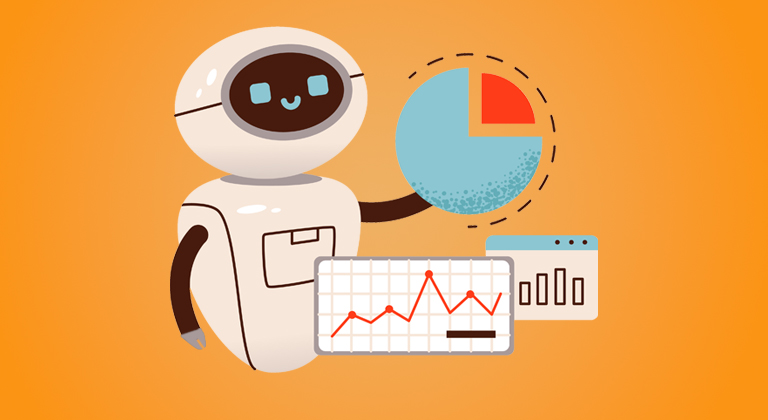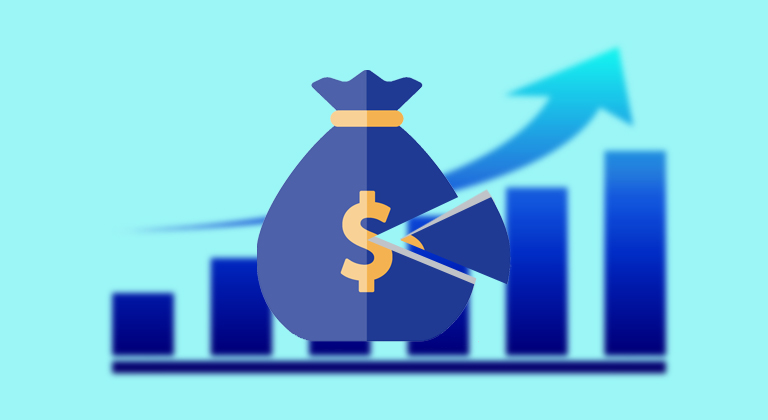The One AI Use Writers Won’t Hate
The soul of being an author is writing books—and no machine, no matter how advanced, will ever truly replicate that. But just because we don’t want AI handling our plot twists doesn’t mean it can’t serve us in other ways. In fact, when it comes to one of the biggest bottlenecks self-published authors face in selling more books, AI might actually be the perfect secret weapon.
As Ginger points out in today’s blog, writing may be our passion, but publishing is a business. And buried in that business is a mountain of data—ad results, sales numbers, conversion rates—that most authors don’t have the time (or desire) to sift through. But AI was built to make sense of messy data, and in Ginger’s case, it helped diagnose the issues with his ads and pull him out of a recent slump. So if you’d like to stop crunching numbers and get back to focusing on what you do best, there may just be an AI use worth embracing after all.
Let’s get one thing straight: I’m not a fan of using AI to write books.
It’s not just that I don’t think the technology is capable of it yet—and it’s FAR from capable of it yet.
I just think there’s something wrong with the idea. It’s like—surely we invented this incredible technology to give us time to write, not the other way around!
To me, writing is the fun part—the messy, soul-spilling, caffeine-fueled flow state that’s as close to speaking to God as I think a lot of us mere mortals ever get—and I’d rather wrestle a plot twist myself than let a machine do it for me.
But here’s where I’ll surprise you: I don’t think self-published authors should ignore AI completely.
It’s not your ghostwriter. It’s sure as hell isn’t your muse—but at the end of the day, Artificial Intelligence is still a darn good calculator—and maybe that could be of use to you.
The promise of AI was that it could deliver human intelligence without the weaknesses of human brains and bodies. You could ask it to do the most mundane, most soulless tasks and it would set forth diligently—never taking a cigarette break, falling asleep on the job, or needing a mental health day. AI can churn through pages of data in mere seconds—accomplishing what human analysts could take weeks to.
This is the power of AI—and it’s a power I used to crack the code on some of my recent advertising challenges. Not only did it help me conquer a plateau in my advertising, it also demonstrated a way in which self-published authors can use AI to help boost their career while still respecting the sanctity of the writing process.
Maybe Artificial Intelligence can help writers after all…
It all started while I was recently messing around with Grok, which is the AI offering from what used to be called Twitter.
Grok is an alternative to ChatGPT or Google’s Gemini, doing pretty much exactly what they do, just using a different language model to work from. While I was playing around, I noticed something I hadn’t seen before. Grok had the capability to upload files for the artificial intelligence to analyze.
(Now, for those of you who take issue with the man who owns what-used-to-be-Twitter, I don’t know if Grok is the only AI which offers this capability. I didn’t check if Gemini or ChatGPT also offer this on their free service—I just happened to notice it first on Grok and thought I’d give it a try while I already had the page loaded. Feel free to use a different AI model if you take issue with Grok.)
Anyway. When I noticed this, I had the sudden idea of letting it look at the data from the advertising I’d been doing recently—asking if Grok could see any patterns that might help me boost the profitability of my book sales.
Because I’ll be honest—while I remain a champion of direct sales to readers, advertising is a tough business. We’re constantly required to “dial it in” to make a profit, yet we need to churn through pages and pages of statistics to make informed decisions about our advertising.
And that’s the double-edged sword of being a self-published author. We got into this business to write books – but here’s the deal: As indie authors, we’re not just storytellers. We’re also one-person marketing machines. If you’re running direct sales like I am, you’ve got to sling eBooks, tweak landing pages, and pray Facebook doesn’t eat your budget alive to make a profit—and still find time to keep writing while you do it!
I mean, it’s possible—I’m living proof—but it’s also a lot, and I’ll admit—I was drowning in the process of running my publishing empire.
Last year, when I decided to sell my eBooks directly to readers through Shopify, I was successful in cutting out Amazon as the middleman—but even with all the advantages direct sales offered, there were some months when I was barely breaking even. Recently, I’d been working harder than ever—yet every month, I felt like I was sliding backward.
Sales trickled, my ads became less effective, and I started wondering how I’d started so strong, yet suddenly fallen so far. I had reams of data to go through—but because I’m a writer, not a data analyst, I didn’t know if I’d be able to figure out what I needed to do to get back on track.
That’s when I turned to AI—not to write my next book, but to dissect my mess of numbers and point me toward daylight.
Facts are stubborn things…
I’m a history major, and one of my favorite periods of history is the American Revolution. I remember reading about founding father John Adams defending the British soldiers accused of the Boston Massacre, using his defiant defense “facts are a stubborn thing!”
That’s the philosophy I’ve always had when it comes to advertising. You can’t go on feelings in advertising—every decision has to be driven by cold, hard, objective data.
But what sense can most of us make of that data?
That’s what appealed to me about using AI to analyze my marketing operation—so I handed over twelve months of data to Grok to see what it (he? she?) could make of it.
We’re talking Facebook ad stats, landing page analytics, and Shopify sales figures—a pile of spreadsheets that contained tens of thousands of figures spread across nearly twelve months of advertising.
I asked Grok two things:
“These are the metrics for my advertising. Please analyze these results and list the most-effective creative/adverts?” and “please list the adverts into a list of most effective to least effective. Please provide the metrics you used to come to this conclusion.”
I wasn’t expecting a miracle—but I had this sense that Grok would be able to see patterns in my advertising data that I’d missed during my analysis.
That turned out to be exactly what happened.
Grok crunched the numbers and spat out a detailed breakdown of my top-performing ads—both the ones targeting direct sales, with a low cost-per-purchase metric, and the traffic drivers that tested advertising creative or drove traffic to my books on Amazon and delivered dirt-cheap clicks.
And what did I discover? That my hunch had been right. Grok had spotted something I’d missed.
My recent campaigns were doing almost everything right. I’d dialed in my audience, and created lots of high-performing ads, and had a landing page that converted at up to 25%.
But the reason my results were tanking is because I’d used everything I’d learned to create new advertising campaigns that were literally too much of a good thing.
I was overloading them—starting new campaigns with too many individual ads all at once.
This caused problems because it totally derailed Facebook’s “Learning” phase, where it figures out who to show your ads to for the best bang-per-buck. Facebook has to accumulate 50 conversions before it can figure out the most effective audience to show the ads too, and with so much creative, I couldn’t get to that magic number on any individual ad because I was running too many of them with too small a budget (and at $200 a day, I didn’t think that was a small budget.)
Grok’s fix? Start small—fewer ads, tighter focus—and let the system complete that Learning process and optimize my campaign before scaling up or adding new creative options.
I ran a new campaign based on this advice, and bam—results flipped overnight. I started off with just three different ads and they delivered cheaper clicks, more sales, and less hair-pulling over the course of my magic 7-day “attribution window.”
It was advice I’d never have figured out on my own, because I was blindly following my instincts instead of analyzing the data—and my instincts told me to keep adding new creative.
Now, don’t get me wrong—new creative is important. But I needed to get through the Learning process first—and now I understand that, I’m better prepared each time I try out a new campaign.
So, AI didn’t write any of my books, but it sure helped me sell them! And if you’re a self-published author struggling with advertising, maybe it’s time to let AI peek at your ad data as well.
Here’s how you can do it yourself.
Step 1: Gather Your Data Pile
Just as with your lawyer or your doctor, AI will only give you useful advice if you tell it the truth. Therefore, your job is to provide it with as much raw data as you can. Pull your analytics from the last six to twelve months. Grab your Facebook Ads Manager reports (look for “Amount Spent,” “Results,” “Impressions,” and “Link Clicks”). Export your Shopify or WooCommerce sales data (total sales, orders, traffic sources). If you use landing pages, snag those stats too (visits, conversions, bounce rates). Don’t worry if it’s a mess—AI’s here to sort it.
Step 2: Feed It to Grok (or Your AI of Choice)
You’ll need an AI tool that can handle analysis—Grok’s my pick, but ChatGPT or Google’s AI tools might work just as well (although I think you might need a paid version of ChatGPT, or plugins.)
Upload your files (CSVs work best) or paste the raw numbers if it’s not too clunky. Be clear about what you’re handing over: “Here’s 12 months of Facebook ads, Shopify sales, and landing page data.” The AI doesn’t care if it’s pretty—it just needs the facts.
Step 3: Ask the Right Questions
AI’s only as good as your prompts, so don’t be vague about what you’re asking. Here’s what worked for me—tweak as needed:
- “Which of my Facebook ads had the lowest cost per purchase or cost per click over the last 12 months? Include creative names, amounts spent, and results.”
- “Which landing pages had the highest conversion rates, and what traffic sources drove them?”
- “Suggest a new Facebook campaign combining my best-performing ads and landing pages. Keep it simple to optimize the Learning phase.” Be specific, and you’ll get answers you can actually use.
Step 4: Test the Plan
Grok (or whichever AI you chose to use) will spit out a report—top ads, key insights, maybe a campaign idea. Don’t just nod and move on—act on this new information.
Set up a small test campaign on Facebook with, say, two or three ads based on the winners. Keep your budget low at first and watch the metrics. If clicks or sales spike, scale it up. If not, tweak and try again. The point is to start lean, like Grok taught me, and let the data guide you towards adding more creative or scaling up.
Why This Beats Guessing
Self-publishing’s a grind, and most of us don’t have a marketing degree. In fact, the biggest frustration many self published authors have is that they came to write books, but now they’ve got to work as a publisher, publicist, and marketing professional as well.
AI systems like Grok can act like a nerdy best friend who loves spreadsheets, and sees patterns in them that a non-professional might miss—like my “too many ads” blunder.
Even as somebody opposed to a lot of what AI stands for, I think this is an entirely ethical use of the technology. Using Grok or ChatGPT to analyze your marketing data isn’t the same as getting AI to write books for you. Instead, it’s about using it as a tool to help solve the publishing puzzles that bog you down and prevent you from focusing on writing. It helped me shoulder my way through an advertising roadblock and while my Shopify sales aren’t back to skyrocketing just yet, they’re climbing in the right direction.
So, here’s my pitch: give AI a chance.
Writing your next book is your job, and it’s the best part of being an author. But if your ads are flatlining or your sales are stuck, toss your data at Grok or another AI tool and see what sticks. You might be surprised how a little number-crunching can free up your brain for the stuff that matters—crafting stories readers can’t put down.
And if you do give it a shot? I’d love to hear how using AI worked for you. Be sure to drop your thoughts in the comments below. Do you think AI can save your ads? Or do you think I’m selling out by trusting it even this much?











